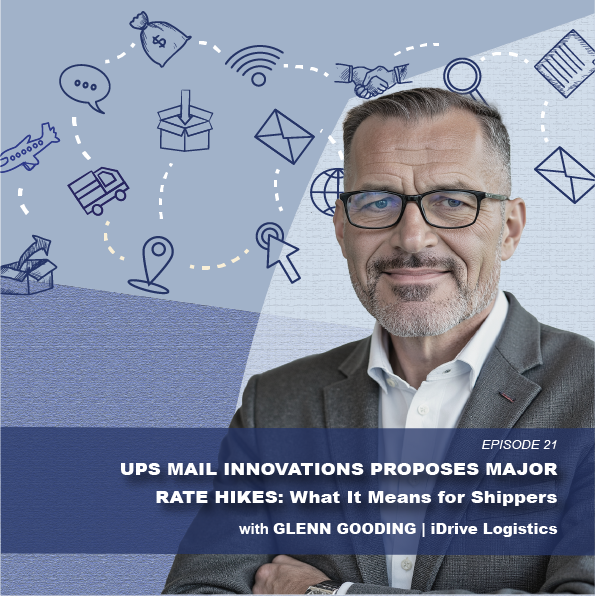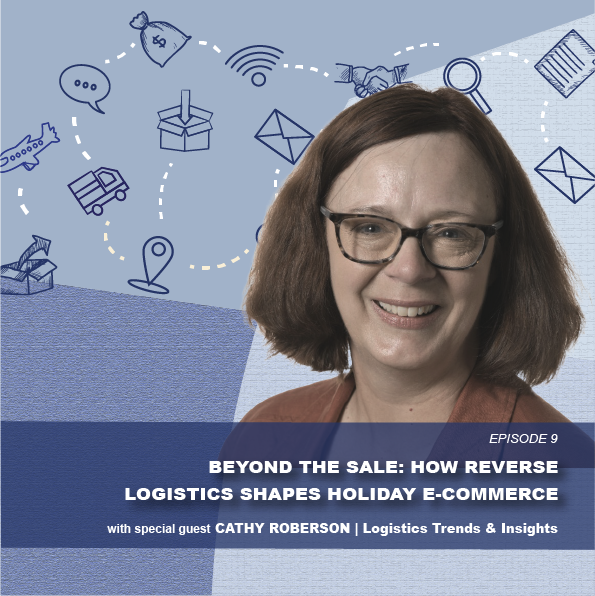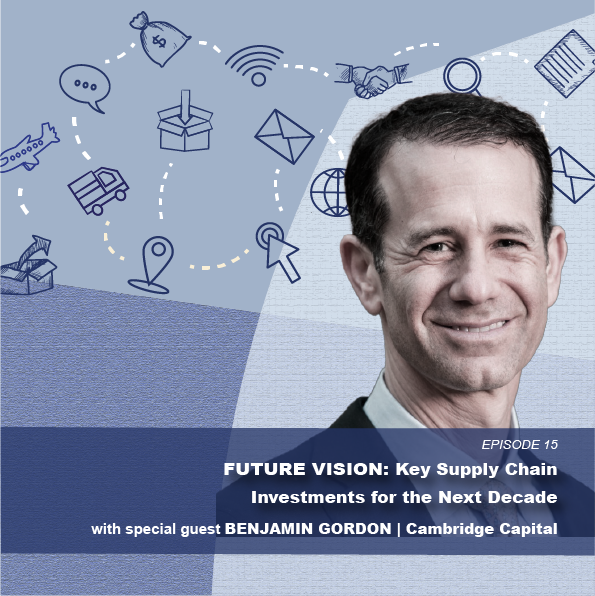UPS Main Innovations (UPS MI) Proposes Major Rate Hikes
UPS Mail Innovations (UPS MI) is hiking rates by 20–40%, and in this quick take episode, host Glenn Gooding, breaks down what’s behind the shift. He explains how USPS pricing changes are impacting the service, why a shutdown may be looming, and what shippers should consider next, from USPS Ground Advantage to gig carriers.

In this episode of Parcel Perspectives, Glenn Gooding shares his take on the major rate increases (20-40%) coming from UPS Mail Innovations. Drawing from his time overseeing revenue at UPS MI, Glenn explains what’s driving these changes and what they mean for shippers moving lightweight residential parcels.
Glenn breaks down how the loss of a key USPS pricing agreement has put UPS MI in a tough position: paying higher rates, taking losses, and potentially pricing itself out of the market. With limited paths forward due to internal product overlap and labor restrictions, Glenn suggests the service may be approaching a shutdown.
The episode also walks through practical next steps for affected shippers, including USPS Ground Advantage, gig delivery networks, and traditional parcel carriers, each with trade-offs to consider.
Glenn Gooding [00:00:00]:
I think it’s the beginning of the end for UPS MI. I think with this pricing, they’re going to price volume out of their network, and I think it’s more than likely a foregone conclusion that they will be shuttering operations.
[00:00:12] Welcome to Parcel Perspectives, the podcast dedicated to small parcel shippers. I’m Glenn Gooding, and each episode, we dive into insights, best practices, and strategies to help you navigate this complex, costly market.
[00:00:26] Hello, everyone! I’m Glenn Gooding with Parcel Perspectives. Yeah, I wanted to offer just a quick take on what we’re seeing out there in kind of the supply chain world and news with regard to UPS Mail Innovations and their proposed increases to their client base that range somewhere between 20 and 40% – really massive increases.
[00:00:48] This one kind of hits close to home for me. For those of you who don’t know, I came from a long UPS pedigree, in pricing operations and industrial engineering and one of the entities that I worked incredibly closely with and even managed revenue management for – towards the end of my UPS career was UPS Mail Innovations. It’s a fantastic company, has great people there, and it just kind of breaks my heart to see what is unfolding and happening over there.
[00:01:24] I’m going to offer you some facts and some opinion on what I think from my seat is happening there and what you might as a shipper, as a brand, as a 3PL might want to consider when looking for solutions for lightweight residential deliveries.
[00:01:43] So, UPS MI was originally known as RMX was acquired some time ago by UPS and quickly became the crown jewel of the Supply Chain Solutions portfolio. When I say crown jewel, they had historically provided the lion’s share of net revenue or profits for the Supply Chain Solutions group. It was an interesting paradigm, though, or an interesting kind of a melding between the traditional small parcel brown operation and UPS MI. For any of you folks that don’t understand that, you need to know that both have always operated as separate P&Ls, separate companies, separate networks. There’s never been a co-mingling.
[00:02:29] What I always found interesting about the acquisition of UPS MI is they offered some very compelling solutions for less-than-a-pound. That’s traditionally where they made their money and offered value to the marketplace, but they also offered compelling greater-than-a-pound solutions. What became interesting is you could find scenarios where UPS MI would be viewed as competing with or cannibalizing existing UPS traditional small parcel volume, particularly back in the day in the UPS Basic or UPS SurePost – they’re now called Ground Saver product.
[00:03:08] It’s important to note that as we talk about a path forward for UPS MI and what the future may hold. So, in one of my previous podcasts, I’ve spent a lot of time talking about what the USPS was doing to the lightweight market. This is a direct outcome of that. UPS MI has lost their NSA with the USPS. That took effect in late December of 2024. You, all the shippers, have [borne] the brunt of that. And in the interim, UPS MI was working really hard to try to retain market share while hoping they could repair a relationship with the USPS.
[00:03:55] Well, in the cusp of doing that, all of you took increases out there. It’s important for you to note that UPS MI was taking that business less-than-a-pound, primarily at a loss, at a large loss. UPS MI has been losing a lot of money since the loss of the NSA. So, what this has forced UPS MI into is they’re now paying the published workshare Parcel Select induction rates. You can go out to the USPS and you can look at those. It’s a flat rate at one pound or 16 ounces. It doesn’t offer a break and it’s at the D hub. And so, if you look at your rates you’ve contractually had with UPS MI, invariably, I would imagine your less-than-a-pound rates were something less than $5 and 10 cents.
[00:04:44] It’s important to note, that’s what UPS MI has been having to pay the post office for final mile delivery on that front. Things have not gone well with the USPS. They don’t have anything secured as far as an NSA and they can’t keep losing money. So, what’s their course of action? They’re pushing through these massive increases.
[00:05:07] This presents a real issue. They’re now offering pricing that is not offering value in the marketplace in comparison to what a shipper could get via Ground Advantage or Priority Mail. And that is the rub on that front. Secondarily, one path to solvency for them would be aggressive – to be aggressive with greater-than-a-pound rates, but that places them in direct conflict again with UPS Ground Saver.
[00:05:39] As you note, if you’re currently sourcing with DHL eCommerce, they’re playing that same game. They’re driving hard in the one to nine-pound range and really trying to shrink their exposure on the less-than-a-pound piece for the same primary purposes, though, they have an NSA with the post office.
[00:05:58] So, this places UPS MI on I think a very dreadful path. I think it’s the beginning of the end for UPS MI. I think with this pricing, they’re going to price volume out of their network, and I think it’s more than likely a foregone conclusion that they will be shuttering operations. That’s particularly unfortunate because I think there could have been some real opportunities if UPS wasn’t bound by very restrictive labor agreements. If you could imagine UPS leveraging their excellent hub and spoke network to move product to the destination and hand off to a gig economy type of delivery solution, or even have UPS MI in their operations do the same, you could really prop up a very viable product, but it’s just too little, too late on that front. And on the UPS small parcel piece, the labor agreement would really get in the way of that. So, they’re really in a predicament on that front.
[00:07:14] If you are a shipper that is reliant on UPS MI, you need to – if you haven’t already, and you should have already – you need to have some contingency plans. Contingency plans, as I see them, are as follows. The traditional route is to transition to USPS Ground Advantage. A lot of shippers have done that. That has been the predetermined, desired outcome for the USPS where they’re delivering for America and attacking the workshare program.
[00:07:45] There are some cons to that solution. The cons are: poor performance, poor time in transit, poor customer experience, poor tracking visibility, and that can be a challenge. Another option as a shipper, you can procure an agreement with the likes of a DHL eCommerce, which is solely dependent on the USPS for final mile delivery.
[00:08:10] If you have the volume, you might be able to secure a semi-competitive, less-than-a-pound rate, but it will be contingent on providing significant greater-than-a-pound volume for them. Hence, putting you potentially into a sourcing rub because that volume is traditionally being tendered to a UPS or a FedEx, and they usually tie you down with performance language.
[00:08:36] Other options could be gig economy type of solutions. The SpeedX’s, the UniUnis, the Vehos of the world offer nice solutions, but traditionally they aren’t a one-stop shop. They can’t provide 100% coverage to every address. So, you could venture into those waters and potentially get compelling less-than-a-pound rates that align well with their network and their delivery model. But you still need an answer for rural, super rural type of deliveries, which may push you back to a USPS Ground Advantage type of scenario.
[00:09:20] Again, the other viable option for you, if you’re willing to pay for it, is you push it all into a traditional small parcel network billed at one pound, and that would be the likes of a UPS or a FedEx through the Ground Economy or Ground Saver products, but note high degree of sensitivity with those carriers on lightweight residential markets because it’s low revenue on a high fixed expense for the delivery.
[00:09:46] So, in essence, as a takeaway, very sad to see things develop for UPS MI as they have great people, great company, great legacy there. They’re having to do what they have to do based off the fact they don’t have an NSA with the USPS and I see them pricing themselves out of the market and exiting the market at some point here in 2025.
[00:10:14] Build a contingency plan. Look to options. By all means, if you’d like to have a conversation, look for some assistance or some expertise on that front, I’d be happy to be a resource.
[00:10:26] Thanks for listening. More on this subject to come in a deeper dive and thanks for tuning into Parcel Perspectives. Appreciate you. Bye-bye.
[00:10:43] Thanks for listening to Parcel Perspectives hosted by me, Glen Gooding. I’ve been in the small parcel space for 37 years, starting with a deep and broad background, working for one of the major carriers as an operator and industrial engineer later managing pricing at the highest level. For the largest, most complex shippers in the world.
[00:11:02] Since then, I’ve been a national thought leader and worked to help drive strategy for clients from Fortune 50 companies to start up eCommerce businesses, helping them more competitively align in this complex and expensive market. If you enjoyed the show, please subscribe and share with friends. Join us next time for more expert advice and strategies to stay ahead of the shipping game.
Key Topics with Timestamps
- 00:00 The Beginning of the End for UPS Mail Innovations
- 01:24 What Shippers Should Be Thinking About Now
- 03:08 Fallout from Losing the USPS NSA
- 05:07 Why UPS MI's New Pricing Doesn't Add Up
- 07:14 Contingency Planning: What Are Your Options?
- 09:46 Final Thoughts: Prepare for UPS MI’s Exit
Other Podcasts
-
A Consultant’s Role in Supply Chain & Carrier Contracts
Discover how logistics consultancy revolutionized small parcel shipping for Right Manufacturing Systems in this episode of Parcel Perspectives. Join Glenn Gooding and Ian Hartman as they discuss achieving a 23% reduction in shipping costs, leveraging data for smarter decisions, and the invaluable insights gained from expert consultancy. Tune in to learn how deep industry knowledge and strategic negotiations can transform your logistics operations.
-
How Reverse Logistics Shapes Holiday eCommerce
Join Glenn Gooding and Cathy Roberson as they dive into the world of reverse logistics. Discover how carriers like UPS, FedEx, and USPS are adapting to the growing returns trend, and explore innovative strategies for handling oversized items and complex returns. Learn about the latest trends, including "bracketing" and sustainable practices, and how AI is transforming the returns process.
-
Future Vision: Key Supply Chain Investments for the Next Decade
The Future of Logistics is Here. Join Glenn Gooding and special guest Benjamin Gordon, Managing Partner and CEO at Cambridge Capital, in this week's episode of Parcel Perspectives as they explore the cutting edge of supply chain management. This episode covers it all: the AI revolution, the eCommerce explosion, the crucial role of customer experience, and the growing importance of sustainability. Get expert insights into future investment opportunities and discover how to build a resilient supply chain that can withstand any disruption. Tune in and future-proof your business!



